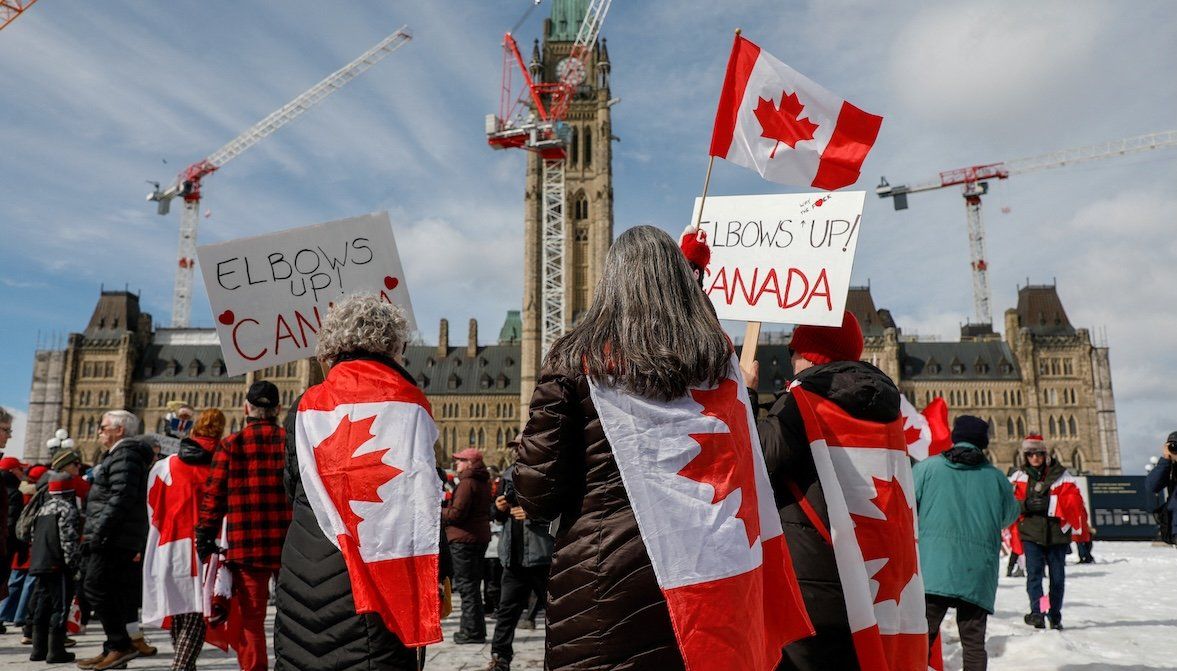People gather for the "Elbows up" rally on Parliament Hill in Ottawa, Ontario, Canada, on March 9, 2025.
On March 4, 2025, US President Donald Trumpincreased tariffs on Chinese imports from 10% to 20%. The same day, the US imposed a 25% tariff on imports from Canada and Mexico. Two days later, Trump announced that goods and services covered by the United States-Mexico-Canada Agreement, aka USMCA, would be exempt until April 2, when reciprocal tariffs are set to take effect against all countries around the globe. Canadian energy and potash remain tariffed at 10%, while its steel and aluminum are tariffed at 25%.
Faced with these realities, Mexico, China, and Canada are pursuing very different strategies. What’s working, what’s not, and what’s next?
Mexico has opted for a “respectful” approach prioritizing dialogue over reprisals. In January, President Claudia Sheinbaum launched “Plan Mexico” to address her country’s $105 billion trade imbalance with China by boosting domestic production and attracting investments. She also aggressively tackled drug cartels and migration, Trump’s two pet peeves at the border. In a phone call on March 5, Trump told her, “You’re tough,” and announced his intent to grant Mexico its USMCA reprieve until April 2.
China has taken decisive retaliatory actions – but also sees an opportunity. Vowing to fight “to the bitter end,” Beijing imposed additional tariffs ranging from 10% to 15% on specific American imports, notably soybeans, pork, beef, chicken, and cotton, which will hurt Trump’s Midwestern voters. But China will also leverage America’s April 2 tariffs to boost trade with other nations, potentially offsetting losses in the US market.
Canada has been the most aggressive, going “elbows up” – a hockey term signaling defiance. Ottawa imposed counter-tariffs that could imperil 3.7 million jobs in red US states, and Ontario Premier Doug Ford threatened to impose a surcharge on electricity exports (which he later withdrew). This week, newly appointed Prime Minister Mark Carney will travel to Europe to shore up trade with the UK and France, rather than engaging first with Washington.
Why the tough stance? For Canada, this isn’t just about tariffs. Trump’s continuous talk of making Canada the 51st US state has enraged Canadians, who are canceling US holidays and boycotting American products. It has also upended the next Canadian election, which Carney is expected to call within days, and which he could now win on the back of anti-Trump sentiment.